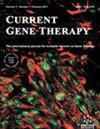Catechin Protects Against Lipopolysaccharide-induced Depressive-like Behaviour in Mice by Regulating Neuronal and Inflammatory Genes
IF 3.8
4区 医学
Q2 GENETICS & HEREDITY
引用次数: 0
Abstract
Background: Many studies have suggested that tea has antidepressant effects; however, the underlying mechanism is not fully studied. As the main anti-inflammatory polyphenol in tea, catechin may contribute to the protective role of tea against depression. Objective: The objective of this study is to prove that catechin can protect against lipopolysaccharide (LPS)-induced depressive-like behaviours in mice, and then explore the underlying molecular mechanisms. Method: Thirty-one C57BL/6J mice were categorized into the normal saline (NS) group, LPS group, catechin group, and amitriptyline group according to their treatments. Elevated Plus Maze (EPM), Tail Suspension Test (TST), and Open Field Test (OFT) were employed to assess depressive- like behaviours in mice. RNA sequencing (RNA-seq) and subsequent Bioinformatics analyses, such as differential gene analysis and functional enrichment, were performed on the four mouse groups. Results: In TST, the mice in the LPS group exhibited significantly longer immobility time than those in the other three groups, while the immobility times for the other three groups were not significantly different. Similarly in EPM, LPS-treated mice exhibited a significantly lower percentage in the time/path of entering open arms than the mice in the other three groups, while the percentages of the mice in the other three groups were not significantly different. In OFT, LPS-treated mice exhibited significantly lower percentages in the time/path of entering the centre area than those in the other three groups. The results suggested that the LPS-induced depression models were established successfully and catechin can reverse (LPS)-induced depressive-like behaviours in mice. Finally, RNA-seq analyses revealed 57 differential expressed genes (DEGs) between LPS and NS with 19 up-regulated and 38 down-regulated. Among them, 13 genes were overlapped with the DEGs between LPS and cetechin (in opposite directions), with an overlapping p-value < 0.001. The 13 genes included Rnu7, Lcn2, C4b, Saa3, Pglyrp1, Gpx3, Lyz2, S100a8, S100a9, Tmem254b, Gm14288, Hbb-bt, and Tmem254c, which might play key roles in the protection of catechin against LPS-induced depressive-like behaviours in mice. The 13 genes were significantly enriched in defense response and inflammatory response, indicating that catechin might work through counteracting changes in the immune system induced by LPS. Conclusion: Catechin can protect mice from LPS-induced depressive-like behaviours through affecting inflammatory pathways and neuron-associated gene ontologies.儿茶素通过调节神经元和炎症基因保护小鼠免受脂多糖诱发的抑郁样行为的影响
背景:许多研究表明,茶叶具有抗抑郁作用;然而,其潜在机制尚未得到充分研究。作为茶叶中主要的抗炎多酚,儿茶素可能有助于茶叶对抑郁症的保护作用。研究目的本研究的目的是证明儿茶素能保护小鼠免受脂多糖(LPS)诱导的抑郁样行为的影响,并探索其潜在的分子机制。研究方法将31只C57BL/6J小鼠按治疗方法分为正常生理盐水组(NS)、LPS组、儿茶素组和阿米替林组。采用高架正迷宫(EPM)、悬尾试验(TST)和空旷场地试验(OFT)来评估小鼠的抑郁样行为。对四组小鼠进行了 RNA 测序(RNA-seq)和随后的生物信息学分析,如差异基因分析和功能富集。结果在TST中,LPS组小鼠的静止时间明显长于其他三组,而其他三组的静止时间没有明显差异。同样,在EPM中,LPS组小鼠进入张开手臂的时间/路径百分比明显低于其他三组小鼠,而其他三组小鼠的百分比没有明显差异。在OFT中,LPS处理小鼠进入中心区的时间/路径百分比明显低于其他三组小鼠。结果表明,LPS诱导的抑郁模型建立成功,儿茶素能逆转(LPS)诱导的小鼠抑郁样行为。最后,RNA-seq分析显示,LPS和NS之间有57个差异表达基因(DEGs),19个上调,38个下调。其中,13 个基因与 LPS 和 cetechin 之间的 DEGs 重叠(方向相反),重叠 p 值为 0.001。这13个基因包括Rnu7、Lcn2、C4b、Saa3、Pglyrp1、Gpx3、Lyz2、S100a8、S100a9、Tmem254b、Gm14288、Hbb-bt和Tmem254c,它们可能在儿茶素保护小鼠免受LPS诱导的抑郁样行为中发挥关键作用。这 13 个基因在防御反应和炎症反应中明显富集,表明儿茶素可能通过抵消 LPS 诱导的免疫系统变化发挥作用。结论儿茶素可通过影响炎症通路和神经元相关基因本体,保护小鼠免受 LPS 诱导的抑郁样行为的影响。
本文章由计算机程序翻译,如有差异,请以英文原文为准。
求助全文
约1分钟内获得全文
求助全文
来源期刊

Current gene therapy
医学-遗传学
CiteScore
6.70
自引率
2.80%
发文量
46
期刊介绍:
Current Gene Therapy is a bi-monthly peer-reviewed journal aimed at academic and industrial scientists with an interest in major topics concerning basic research and clinical applications of gene and cell therapy of diseases. Cell therapy manuscripts can also include application in diseases when cells have been genetically modified. Current Gene Therapy publishes full-length/mini reviews and original research on the latest developments in gene transfer and gene expression analysis, vector development, cellular genetic engineering, animal models and human clinical applications of gene and cell therapy for the treatment of diseases.
Current Gene Therapy publishes reviews and original research containing experimental data on gene and cell therapy. The journal also includes manuscripts on technological advances, ethical and regulatory considerations of gene and cell therapy. Reviews should provide the reader with a comprehensive assessment of any area of experimental biology applied to molecular medicine that is not only of significance within a particular field of gene therapy and cell therapy but also of interest to investigators in other fields. Authors are encouraged to provide their own assessment and vision for future advances. Reviews are also welcome on late breaking discoveries on which substantial literature has not yet been amassed. Such reviews provide a forum for sharply focused topics of recent experimental investigations in gene therapy primarily to make these results accessible to both clinical and basic researchers. Manuscripts containing experimental data should be original data, not previously published.
 求助内容:
求助内容: 应助结果提醒方式:
应助结果提醒方式:


